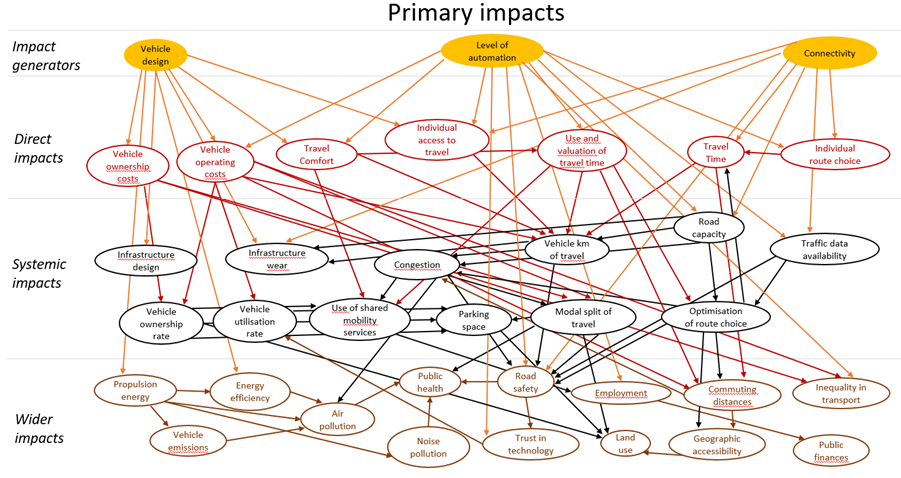
There have been high expectations about introducing connected and automated vehicles in the transport systems, in terms of their impacts on safety, mobility, environment, and prosperity. A large body of previous research has focused on the technology and functionality of CAVs while there still exists a gap in knowledge of the likely wider impacts of these vehicles particularly during the transition phase. In this context, this study seeks to contribute to the societal level impact assessment of connected and automated vehicles. For this purpose, a variety impacts along direct (vehicle operating costs, access to travel), systemic (congestion, amount of travel, modal split changes), and wider (road safety, energy efficiency, accessibility in transport, parking demand, and public health) categories have been identified while various appropriate methodologies have been used for the assessment of these impacts including microscopic simulation, surrogate safety assessment, system dynamics modelling, and Delphi panel study. The analysis results on various direct, systemic, and wider impact analysis of connected and automated vehicles indicate a mixture of positive and negative impacts. The results also show the need for full impact assessment in order to identify improved opportunities to achieve city policy goals or set measures to mitigate negative impacts.
| ID | pc502 |
| Full Text | |
| Tags |










